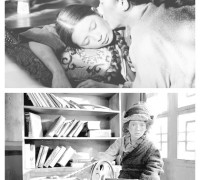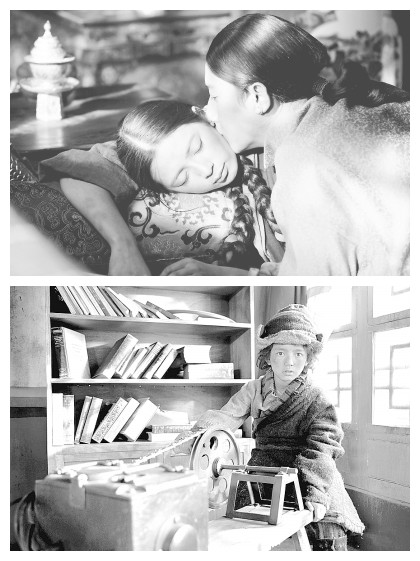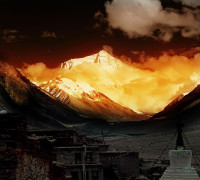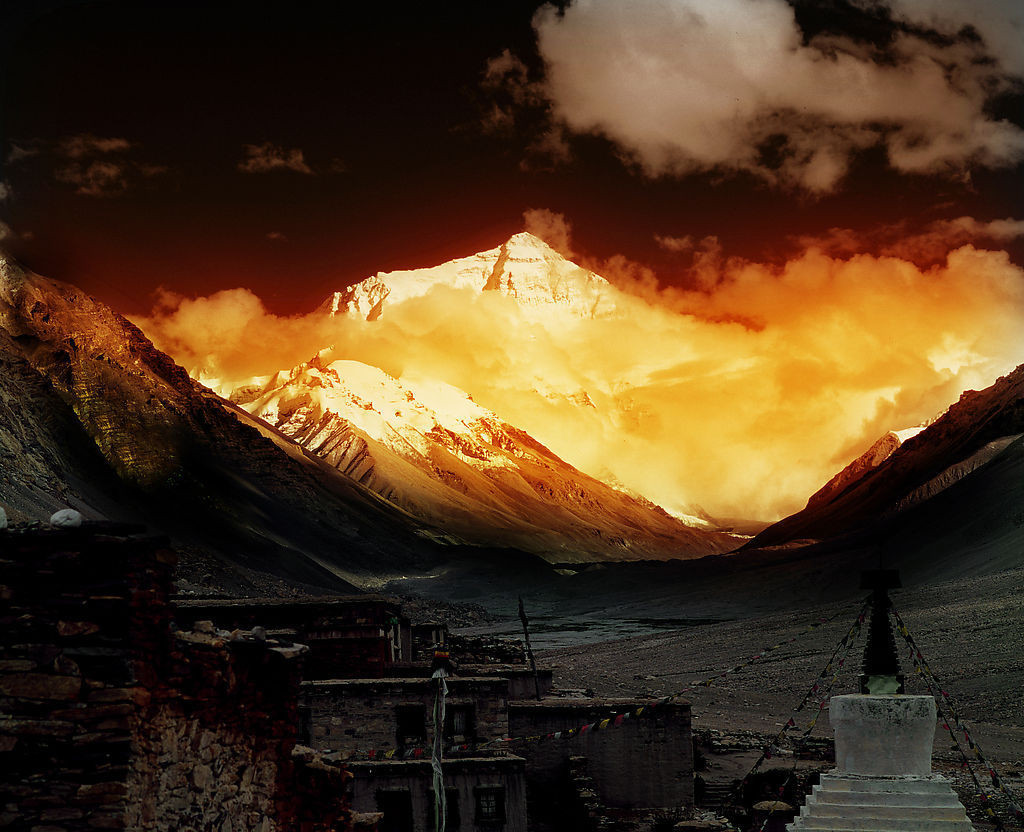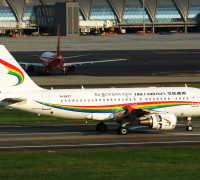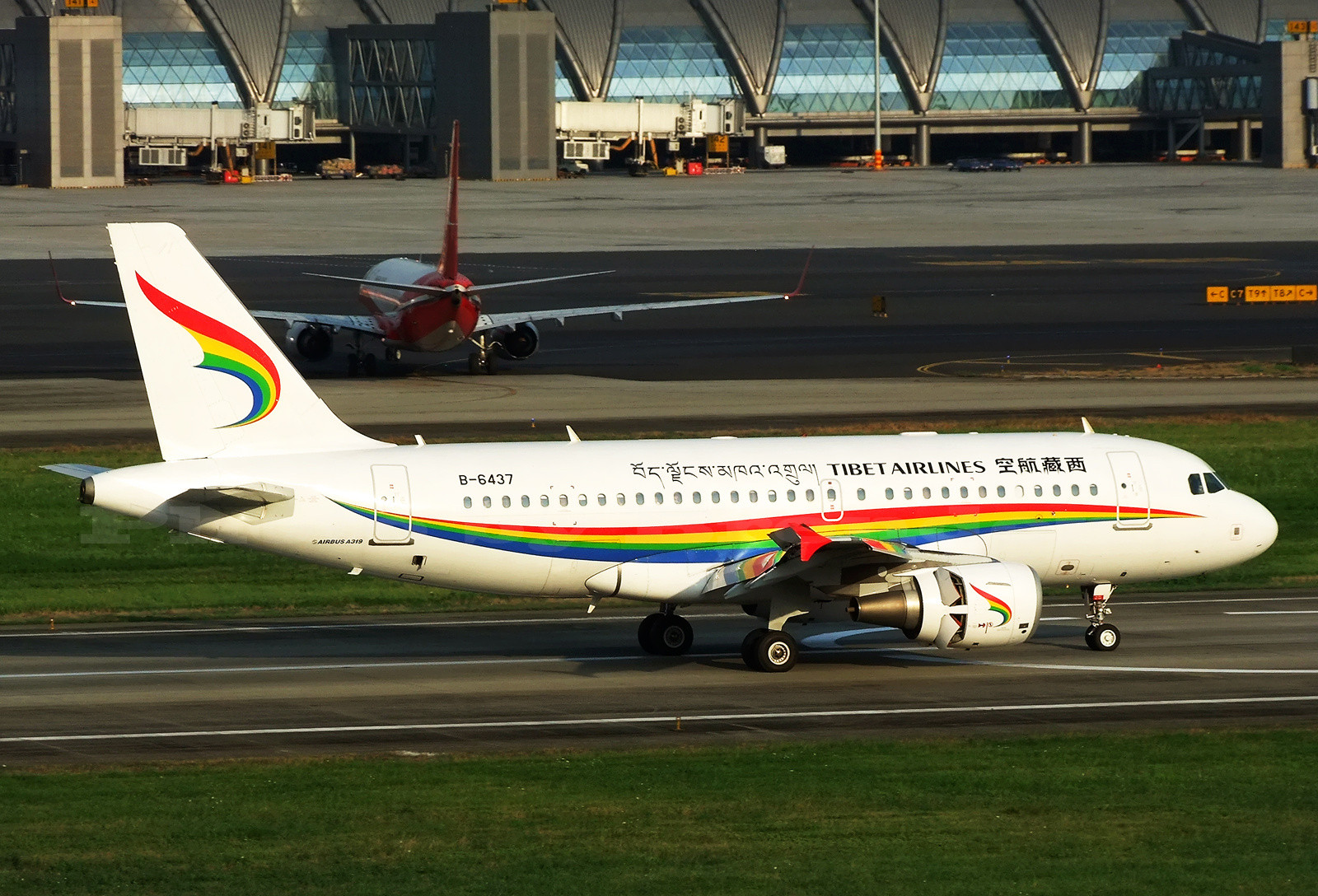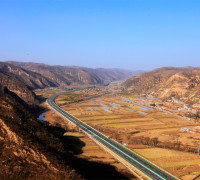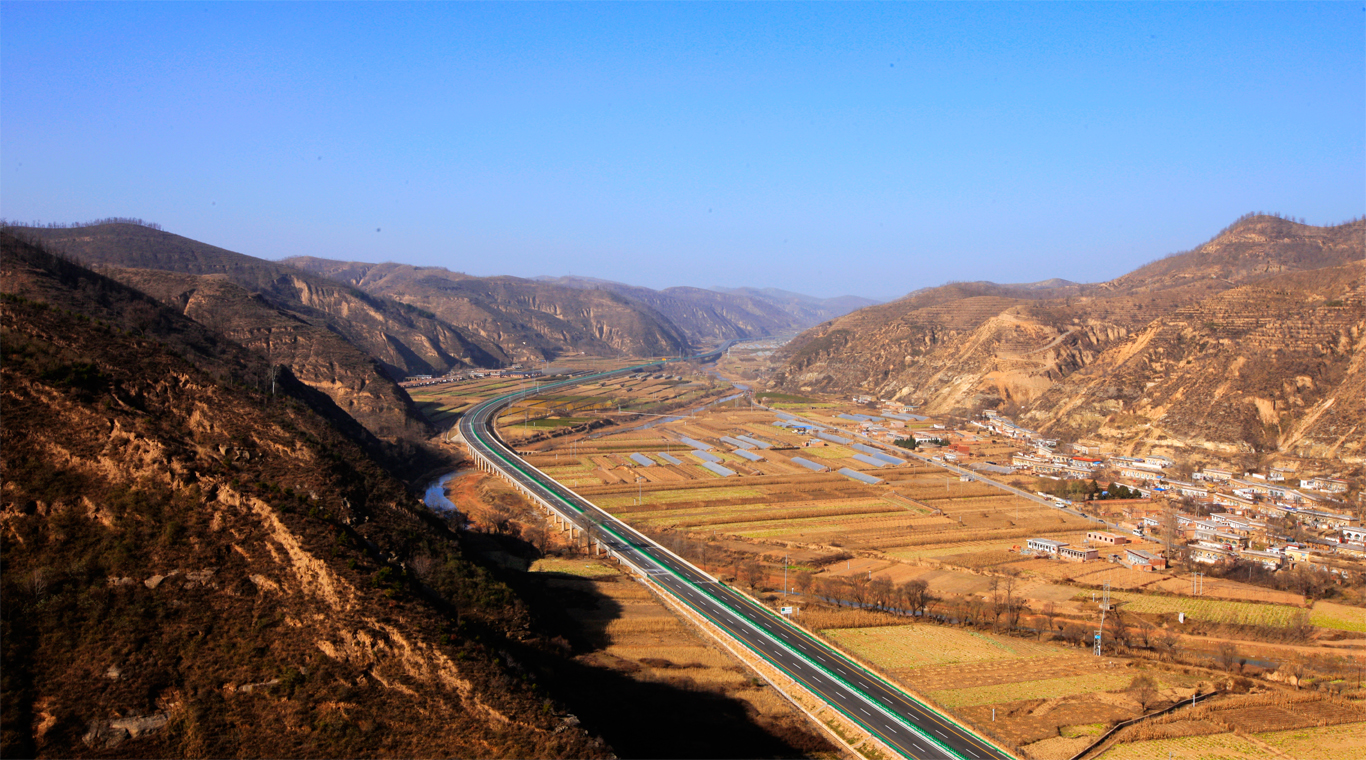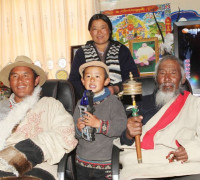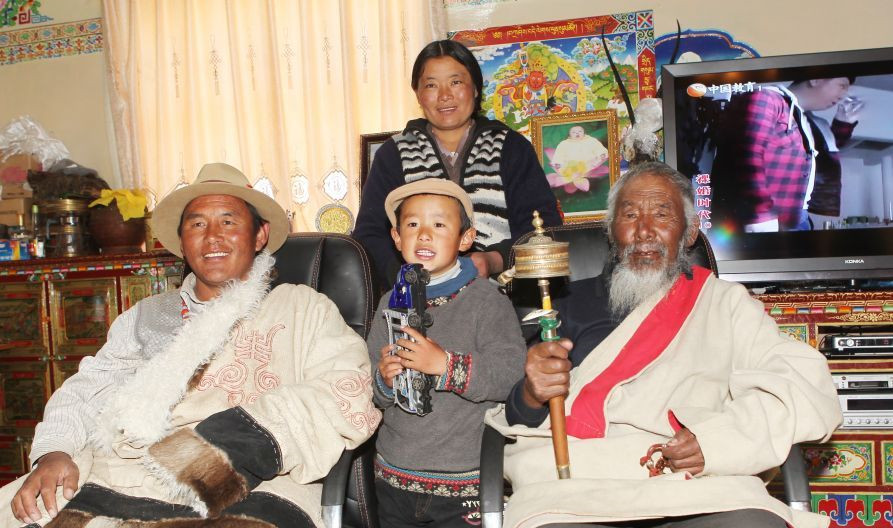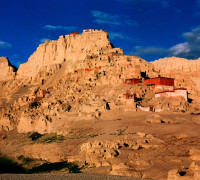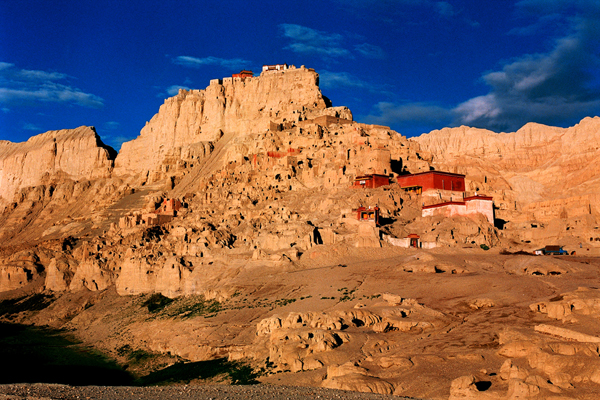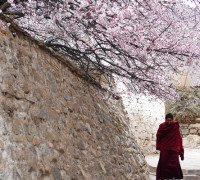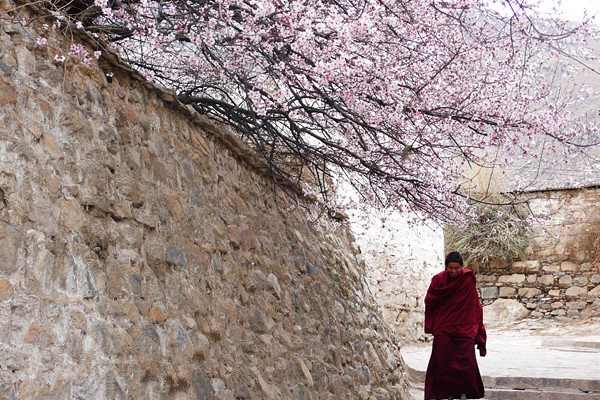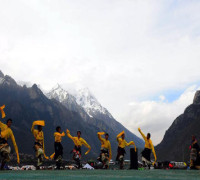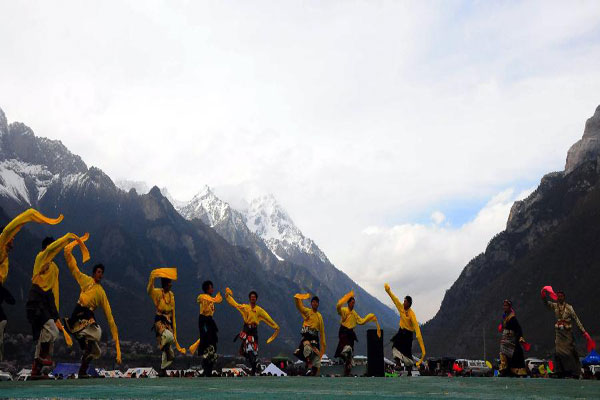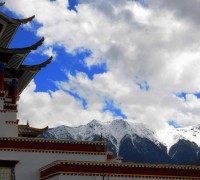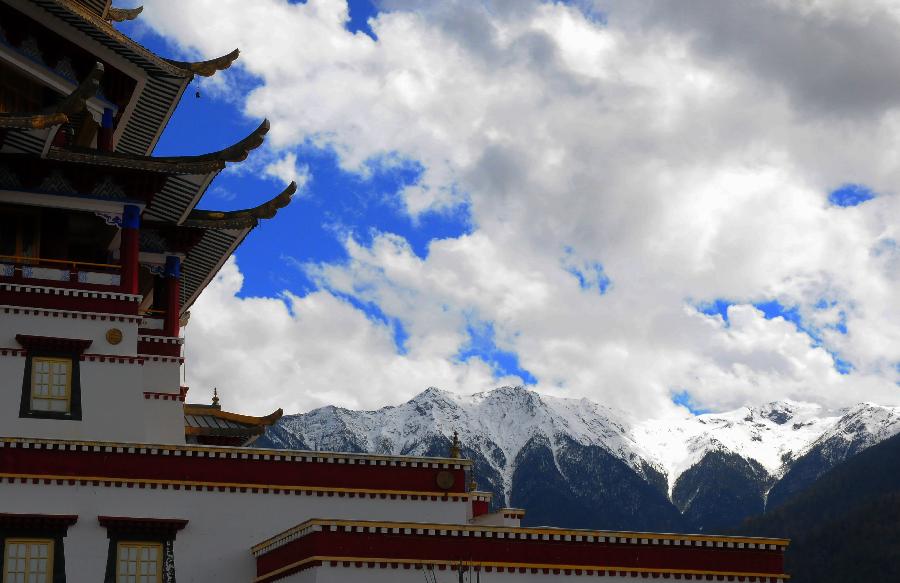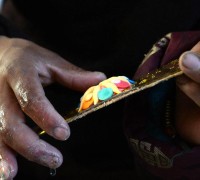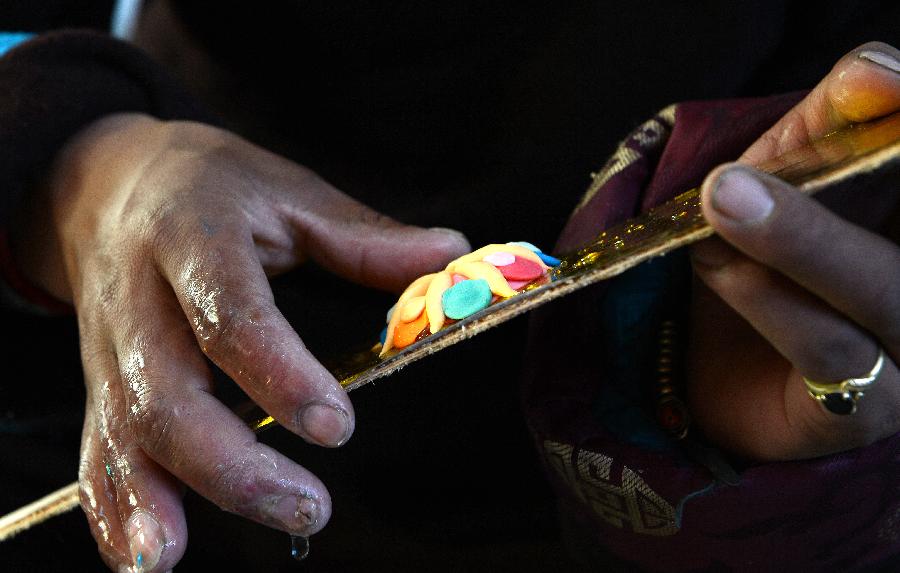After five years’ painstaking efforts and 500 days’ filming on Tibetan plateau, the 118-minute “Tibet Sky” made its debut in Shanghai recently, facing up to the world’s attention in an artistic way.
Focusing on humanity, the film reproduced the democratic reform in Tibet and reflects the socio-historic changes happening in Tibet in the past half century.
In addition to the magnificent mountain landscape and Tibetan culture, the movie touches the audience with a story between Tenzin, child of the manor, and Phurbu, serf of Tenzin.
The childhood friends become enemies when they grow up, because of the huge gap between their identities and families. Phurbu, the serf, starts his life as a lama in the name of Tenzin, which means all chants he makes, and all his prayers, shall be owned by Tenzin.
“Good story is half done to a movie,” said Ren Zhonglun, producer of the movie, “we were willing to shoot the film as a Tibetan epic at the very beginning.”

